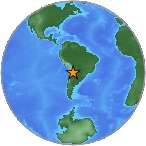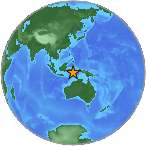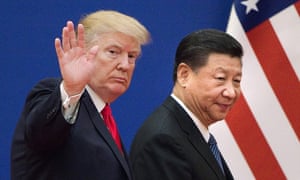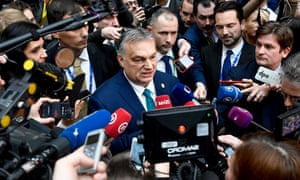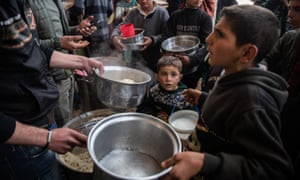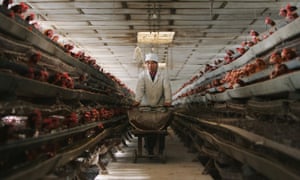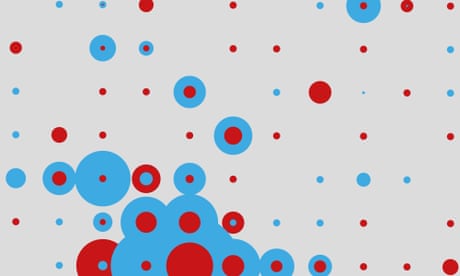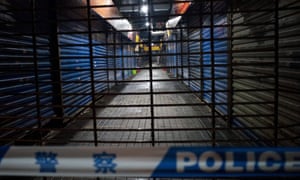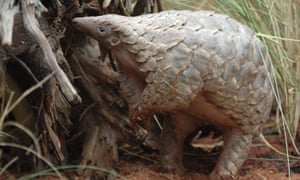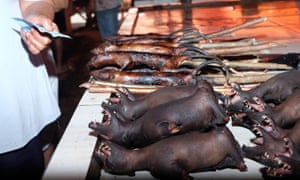"SOCIALIST" DENMARK (A SOCIAL DEMOCRACY) CONTROLS COVID-19
Denmark, which is basically freezing its economy, has a message for America.
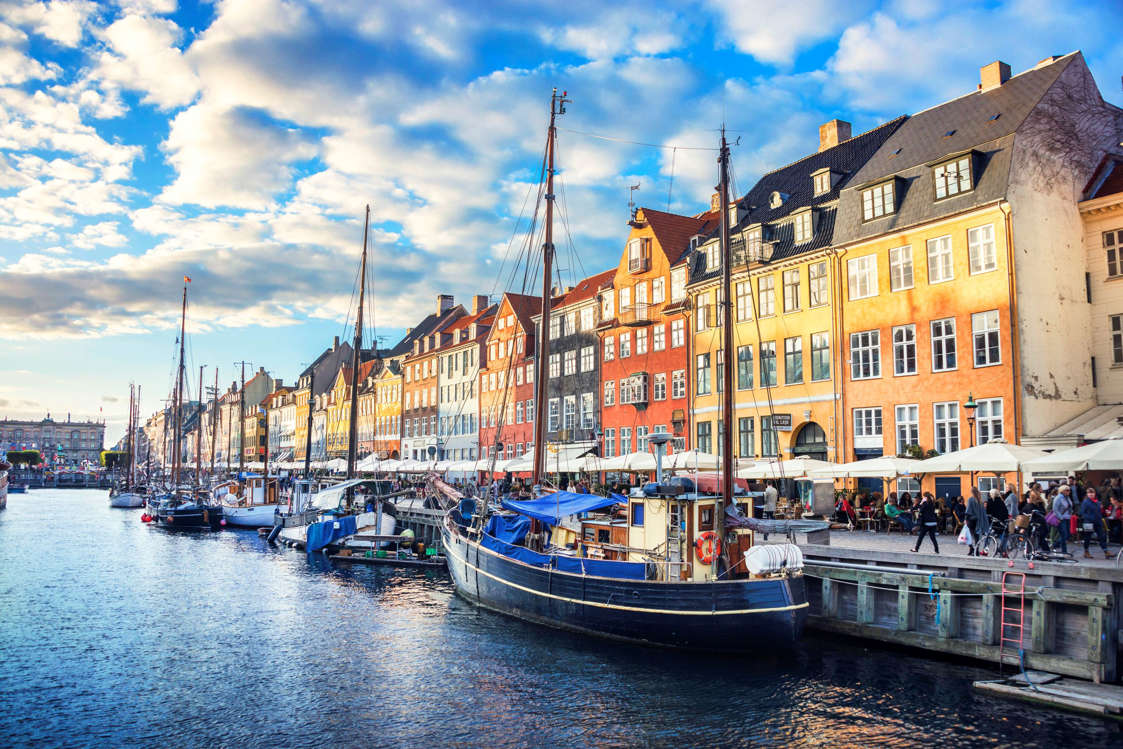
© Oliver Smalley /Ollie Smalley Photography/Getty Images There's a reason the country is frequently recognized for being the happiest on Earth. One look at its beautiful waterfront, a taste of its delicious pastries and an evening spent watching the fireworks in Tivoli, and you'll want to call Denmark home, too.
Derek Thompson 3/25/2020
Around the world, countries are seeking to lock down their populations to halt the spread of the coronavirus, “freeze” their economies in place, and help people survive the ice age by any means necessary.
Denmark’s version of ice-age economics goes like this: To discourage mass layoffs, the government will pay employers up to 90 percent of the salaries of workers who go home and don’t work. The plan could require the government to spend as much as 13 percent of its GDP in three months—roughly the equivalent of a $2.5 trillion stimulus in the United States spread out over just 13 weeks.
Related: Denmark’s idea could help the world avoid a Great Depression
In the 48 hours since I first wrote about this plan, I have heard from politicians and policy makers around the world, including in Spain, the UK, and Australia. To go deeper on this radical idea, I spoke on Monday with Peter Hummelgaard, the employment minister of Denmark. This interview has been edited for length and clarity.
Derek Thompson: You’re the employment minister for a country adopting one of the most radical economic plans in the world. Before we get to the specifics of what you’re doing, give me your outlook on this crisis.
Peter Hummelgaard: What we’re trying to do is to freeze the economy. This is very different from 12 years ago when, as you might say in American terms, we bailed out Wall Street and forgot about Main Street. This time around, it’s about preserving Main Street as much as we can.
After the lockdown, we knew that people would get fired in vast numbers. We wanted to avoid most firings, entirely. The best idea we came up with was for governments to pay businesses to keep employees.
It’s a radical plan. But radical times need radical responses. You could say it puts the old Ronald Reagan quote on its head: We are the government, and we are here to help.
Thompson: Tell me exactly how this plan works, because it’s unlike anything I’ve ever heard. Let’s say I’m a restaurant owner in Copenhagen who has to shut down my business for the next few months. I have 10 employees and, without income, I might have to lay off all of them in a week. I ask you for help. What happens now?
Hummelgaard: First, all of your employees would be eligible to receive income compensation as long as you keep them on contract. That means they are sent home, and the government pays you, the restaurant owner, up to 90 percent of their salaries—up to about $4,000 a month—which you would pay to the workers you still have on contract.
Second, the government would compensate you for fixed costs, like rent. For example, the government will pay a portion of your rent depending how much your revenue declines.
Third, if any of your employees get sick from the coronavirus, the government will pay their sick leave from day one. Generally, in Denmark, the employers are responsible for the first 30 days of paid sick leave.
Finally, we decided to postpone the deadlines of taxes like the value-added tax, and we’ve encouraged banks to extend credit to companies like yours.
Thompson: This is such a generous program. Couldn’t I just defraud you? Couldn’t I pretend to send my workers home but secretly ask them to come into the restaurant and help with a secret delivery business? How do you prevent rampant, massive fraud?
Hummelgaard: We’re not naive. Of course there will be companies that try to take unfair advantage of this. But in Danish society, there has been broad support for these initiatives, and these programs have been rolled out with a large degree of trust.
While at first there won’t be thorough control mechanisms, since these programs are being implemented very fast, we have a few ways to find fraud. Employers have to have an authorized accountant sign for their compensation applications. Also Denmark is a thoroughly digitized country. The government can see—via tax records and mobile-payment applications—if some businesses are still operating as normal. And if we do find cases of fraud, we are going to ask for the money back with a fee on top, or even charge employers with a crime.
Thompson: Am I right to say that this is like a big unemployment benefit program—except the benefits are paid through employers, to ensure that workers keep their jobs?
Hummelgaard: The traditional thing in a recession would be to expand unemployment programs, so that the people being laid off would have a strong safety net—which, in Denmark, they already do. This is the first time, at least in Danish history, that the government has paid private businesses to not fire their employees, even when their employees can’t work. It is an extraordinary scheme. But this is an extraordinary health crisis.
Thompson: In the United States, the two parties in Congress have struggled to agree on a relief package. In Denmark, you reached a tripartite agreement between three different groups—unions, employers, and the government—and within government, you have as many as 10 parties. How did Denmark move so quickly, with so many factions, to pass something so big?
Related: The coronavirus will be a catastrophe for the poor
Hummelgaard: In Denmark, we have a long tradition of strong unions that aren’t as ideological or as radicalized as they can be in other countries. They are used to direct negotiations with employers associations.
Over the past four decades, we have built on that tradition by having government help to solve big challenges. A couple of days after we announced the lockdown, we had an agreement by late Saturday night. And we made it public on Sunday morning. It sent a signal of trust through society — workers standing alongside businesses and government saying we would do whatever it takes, whatever is possible, to ensure a soft landing for the economy. I’m not sure you could copy this everywhere, either because unions are too weak, or because trust between unions and employers is nonexistent.
Thompson: I want to know how you’d respond to three possible critiques of this plan. First, the price tag. Denmark is prepared to spend almost 13 percent in the next three months. Are you concerned about inflation or public debt?
Hummelgaard: If this current predicament becomes a structural problem, with mass unemployment and reduced aggregate demand, the cost to our economy and to our deficit will be much more expensive that investing in these programs upfront. That is our pure logic. That’s the economic side of it. It is more expensive to do less. Then there’s a social side of it: Unemployment creates a host of problems not only for society, but also for individuals.
Thompson: Here’s another criticism some might have: By paying people to not work—and compensating them exclusively if they avoid working—are you making it harder for workers to transition to parts of the economy that need more people, like medical-device manufacturing, or groceries, or online delivery?
Hummelgaard: No. Because we’re still seeing layoffs. This program is merely preventing more layoffs, mass layoffs. You have to remember that these compensation schemes are temporary. They are due to end in June.
Thompson: In fact, that’s the biggest concern about your plan: It’s set to end in June. If you succeed in slowing the spread of the virus, there may still be lots of infections in the early summer. How will the economy transition to normal if there are still people carrying the virus in early summer?
Hummelgaard: The important thing to remember is that our health system must be able to treat those who need treatment. If the virus spreads in Denmark as fast as it has in some regions in Italy and Spain, our health system will have no capacity. But by [slowing] the spread of the virus, our health system will have the capacity to treat those with the disease. That’s the health strategy. It’s not on my table, but it’s part of the overall strategy of government.
If we need to the lockdown for a longer period of time, we may rethink our plan and come up with new initiatives. But it’s important to say that we will do more.
Thompson: Last question: In the U.S., we still don’t have an emergency relief deal. What’s your message to American lawmakers?
Hummelgaard: Do more—fast. Don’t wait. The main focus should be to bridge partisan divides and to make sure that the rescue package for the economy is a rescue for Main Street, not just for Wall Street. Preserve the income and jobs for ordinary working people, and also preserve small businesses. The jury is still out on our initiatives, but I’m confident in our approach.
Derek Thompson 3/25/2020
Around the world, countries are seeking to lock down their populations to halt the spread of the coronavirus, “freeze” their economies in place, and help people survive the ice age by any means necessary.
Denmark’s version of ice-age economics goes like this: To discourage mass layoffs, the government will pay employers up to 90 percent of the salaries of workers who go home and don’t work. The plan could require the government to spend as much as 13 percent of its GDP in three months—roughly the equivalent of a $2.5 trillion stimulus in the United States spread out over just 13 weeks.
Related: Denmark’s idea could help the world avoid a Great Depression
In the 48 hours since I first wrote about this plan, I have heard from politicians and policy makers around the world, including in Spain, the UK, and Australia. To go deeper on this radical idea, I spoke on Monday with Peter Hummelgaard, the employment minister of Denmark. This interview has been edited for length and clarity.
Derek Thompson: You’re the employment minister for a country adopting one of the most radical economic plans in the world. Before we get to the specifics of what you’re doing, give me your outlook on this crisis.
Peter Hummelgaard: What we’re trying to do is to freeze the economy. This is very different from 12 years ago when, as you might say in American terms, we bailed out Wall Street and forgot about Main Street. This time around, it’s about preserving Main Street as much as we can.
After the lockdown, we knew that people would get fired in vast numbers. We wanted to avoid most firings, entirely. The best idea we came up with was for governments to pay businesses to keep employees.
It’s a radical plan. But radical times need radical responses. You could say it puts the old Ronald Reagan quote on its head: We are the government, and we are here to help.
Thompson: Tell me exactly how this plan works, because it’s unlike anything I’ve ever heard. Let’s say I’m a restaurant owner in Copenhagen who has to shut down my business for the next few months. I have 10 employees and, without income, I might have to lay off all of them in a week. I ask you for help. What happens now?
Hummelgaard: First, all of your employees would be eligible to receive income compensation as long as you keep them on contract. That means they are sent home, and the government pays you, the restaurant owner, up to 90 percent of their salaries—up to about $4,000 a month—which you would pay to the workers you still have on contract.
Second, the government would compensate you for fixed costs, like rent. For example, the government will pay a portion of your rent depending how much your revenue declines.
Third, if any of your employees get sick from the coronavirus, the government will pay their sick leave from day one. Generally, in Denmark, the employers are responsible for the first 30 days of paid sick leave.
Finally, we decided to postpone the deadlines of taxes like the value-added tax, and we’ve encouraged banks to extend credit to companies like yours.
Thompson: This is such a generous program. Couldn’t I just defraud you? Couldn’t I pretend to send my workers home but secretly ask them to come into the restaurant and help with a secret delivery business? How do you prevent rampant, massive fraud?
Hummelgaard: We’re not naive. Of course there will be companies that try to take unfair advantage of this. But in Danish society, there has been broad support for these initiatives, and these programs have been rolled out with a large degree of trust.
While at first there won’t be thorough control mechanisms, since these programs are being implemented very fast, we have a few ways to find fraud. Employers have to have an authorized accountant sign for their compensation applications. Also Denmark is a thoroughly digitized country. The government can see—via tax records and mobile-payment applications—if some businesses are still operating as normal. And if we do find cases of fraud, we are going to ask for the money back with a fee on top, or even charge employers with a crime.
Thompson: Am I right to say that this is like a big unemployment benefit program—except the benefits are paid through employers, to ensure that workers keep their jobs?
Hummelgaard: The traditional thing in a recession would be to expand unemployment programs, so that the people being laid off would have a strong safety net—which, in Denmark, they already do. This is the first time, at least in Danish history, that the government has paid private businesses to not fire their employees, even when their employees can’t work. It is an extraordinary scheme. But this is an extraordinary health crisis.
Thompson: In the United States, the two parties in Congress have struggled to agree on a relief package. In Denmark, you reached a tripartite agreement between three different groups—unions, employers, and the government—and within government, you have as many as 10 parties. How did Denmark move so quickly, with so many factions, to pass something so big?
Related: The coronavirus will be a catastrophe for the poor
Hummelgaard: In Denmark, we have a long tradition of strong unions that aren’t as ideological or as radicalized as they can be in other countries. They are used to direct negotiations with employers associations.
Over the past four decades, we have built on that tradition by having government help to solve big challenges. A couple of days after we announced the lockdown, we had an agreement by late Saturday night. And we made it public on Sunday morning. It sent a signal of trust through society — workers standing alongside businesses and government saying we would do whatever it takes, whatever is possible, to ensure a soft landing for the economy. I’m not sure you could copy this everywhere, either because unions are too weak, or because trust between unions and employers is nonexistent.
Thompson: I want to know how you’d respond to three possible critiques of this plan. First, the price tag. Denmark is prepared to spend almost 13 percent in the next three months. Are you concerned about inflation or public debt?
Hummelgaard: If this current predicament becomes a structural problem, with mass unemployment and reduced aggregate demand, the cost to our economy and to our deficit will be much more expensive that investing in these programs upfront. That is our pure logic. That’s the economic side of it. It is more expensive to do less. Then there’s a social side of it: Unemployment creates a host of problems not only for society, but also for individuals.
Thompson: Here’s another criticism some might have: By paying people to not work—and compensating them exclusively if they avoid working—are you making it harder for workers to transition to parts of the economy that need more people, like medical-device manufacturing, or groceries, or online delivery?
Hummelgaard: No. Because we’re still seeing layoffs. This program is merely preventing more layoffs, mass layoffs. You have to remember that these compensation schemes are temporary. They are due to end in June.
Thompson: In fact, that’s the biggest concern about your plan: It’s set to end in June. If you succeed in slowing the spread of the virus, there may still be lots of infections in the early summer. How will the economy transition to normal if there are still people carrying the virus in early summer?
Hummelgaard: The important thing to remember is that our health system must be able to treat those who need treatment. If the virus spreads in Denmark as fast as it has in some regions in Italy and Spain, our health system will have no capacity. But by [slowing] the spread of the virus, our health system will have the capacity to treat those with the disease. That’s the health strategy. It’s not on my table, but it’s part of the overall strategy of government.
If we need to the lockdown for a longer period of time, we may rethink our plan and come up with new initiatives. But it’s important to say that we will do more.
Thompson: Last question: In the U.S., we still don’t have an emergency relief deal. What’s your message to American lawmakers?
Hummelgaard: Do more—fast. Don’t wait. The main focus should be to bridge partisan divides and to make sure that the rescue package for the economy is a rescue for Main Street, not just for Wall Street. Preserve the income and jobs for ordinary working people, and also preserve small businesses. The jury is still out on our initiatives, but I’m confident in our approach.
---30---
 © David Goldman/AP
© David Goldman/AP










